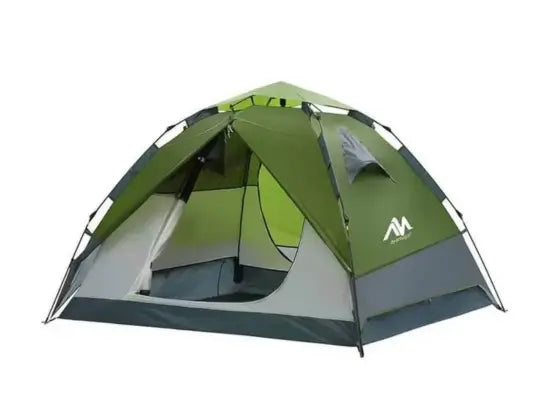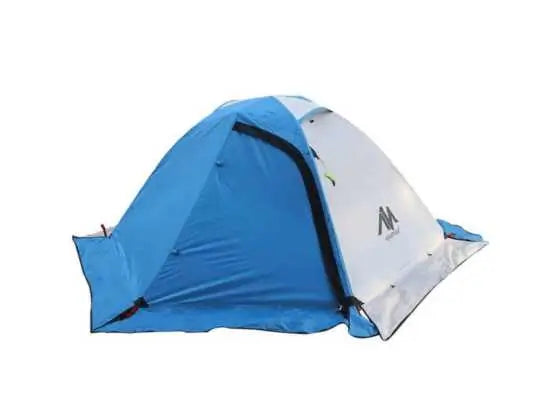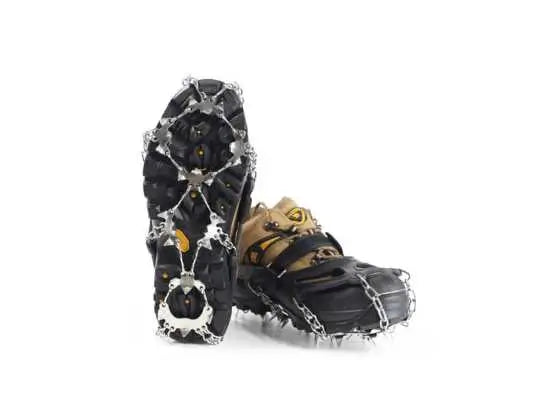As an outdoor traveler, you need to have lots of things at your disposal to be sure that you get the peace you deserve during your outdoor expedition. The lead items that must never miss include the hammock, the sleeping pad, and the sleeping bag. The article will focus on the sleeping bag and the maintenance tips you must know for effective use.
The sleeping bag is likely to be one of the most expensive items the modern outdoor traveler purchased. Naturally, you'll want your investment to last for many years and keep you warm during cold nights. But how can you properly care for a sleeping bag? Is it even possible to wash them? Will it be harmed if it's left crushed in its stuff sack? Of course, these questions should be crisscrossing your mind if you own a sleeping bag.
Don't worry; the article will take you through the stages you must go through for effective cleaning and care of the sleeping bag because you deserve a clean sleeping bag even if you will be sleeping on the floor.
General Sleeping Bag Care
You will have a variety of models in the market, but thanks to the fact that they will all have the same cleaning and maintenance stage. Keeping your sleeping bag clean, protected, and dry, regardless of the make, model, or insulation type will go a long way toward guaranteeing a long and happy service life. The goal here is to increase the longevity of your sleeping bag, and you can only achieve this when you maintain the right cleaning procedures.
- How you sleep in your sleeping bag matters a lot in enhancing the cleanliness of your sleeping bag. Sleep in clean clothes and line your sleeping bag with a sleeping bag liner to prevent dirt and body oils from gathering inside the sleeping bag.
- Learn how to use the zippers on your sleeping bag. Two-way zippers might be difficult to use. Nothing is more annoying than a sleeping bag zip jamming in the middle of the night. Please familiarize yourself with the zips on your sleeping bag and how they work. To keep the fabric from snagging in the zipper, it's a good idea to 'lead' it with a finger.
- Air your sleeping bag as soon as you get home from your trip! It's critical to air out your sleeping bag after each trip to avoid the growth of mold and bacteria in the insulation fill. Remove your sleeping bag from its compact compression pouch as soon as you get home, unzip it, and air it inside out over a clothes airier or equivalent. Airing time will be required for sleeping bags that have become damp during your excursion.
- Take care of your sleeping bag. Standing in it and jumping around a campsite will damage the foot box and its baffles. Sharp rocks and sticks will puncture or shred the lightweight shell fabrics, so always have something between you and the ground (a sleeping mat, clean groundsheet, etc.)
- Stuff your sleeping bag feet first into the bottom of the stuff sack with the zip slightly open when put into its compression sack. This allows air to escape from the top without strain on the seams and stitching. On that topic, stuff your sleeping bag rather than rolling it. You'll be able to compress the sleeping bag even further for a more compact sleeping bag.
How should I store my sleeping bag?
Your sleeping bag's insulating fill is lofty to retain as much body heat as possible, keeping you toasty and warm while you sleep. However, the insulation's ability to puff back up, in the long run, is limited, reducing its ability to retain heat. Down fill is more resistant to repeated compression and retains loft longer than synthetic fill, although it will 'crush' if squeezed for an extended time. Regardless of insulating fill, the best method to preserve a long service life for your sleeping bag is to restrict the length of time it spends compressed.
WASHING A SLEEPING BAG
There are many ways through which your sleeping bag will get dirty. The most common ways include dirt, sweat, and body oils will accumulate in the fill and textiles of your sleeping bag over time. This causes foul odors, but it can also affect the insulation fill's ability to loft. Washing your sleeping bag puts it through a lot of wear and tear, so instead of giving it a thorough wash, consider spot cleaning it regularly. If your sleeping bag is visibly filthy and has lost a significant amount of loft, it's time to wash it.
To clean the shell fabric of your sleeping bag, use a toothbrush and a down-specific cleaning agent like Granger's Down Cleaner or Nikwax down Wash. Of course, there are many more cleansers that you can use, and your budget will determine what you opt for. Body oils tend to gather in the hood, draft collar, and foot box of your sleeping bag; by separating the sleeping bag's face fabric from its insulating fill, you should be able to gently clean and rinse the shell with a wet sponge without getting the insulation too wet. A sleeping bag can endure many years without being washed unless it has become especially soiled on a trip.
The amount of time it takes to wash your sleeping bag completely is mostly determined by the fill type. A down-filled sleeping bag requires more time and effort to clean than a synthetic sleeping bag.
STEPS FOR WASHING A SLEEPING BAG
- For complete cleaning instructions for your specific sleeping bag and fill type, consult the manufacturer's care instructions.
- Check to see any residues from past washes in your washing machine/detergent dispenser. Because most household washing machines are too tiny to clean a sleeping bag fully, consider paying a visit to your local Laundromat to utilize a larger front-loading washing machine.
- Wash your sleeping bag according to the manufacturer's directions, using a cleaning chemical appropriate for the file type of your sleeping bag. This is a regular 30-degree wash cycle for most sleeping bags. Consider running a second rinse cycle to get rid of any remaining soap.
- Remove your sleeping bag from the washing machine with care. Instead of clutching one end of the sleeping bag, support the sleeping bag as a whole. Sleeping bags can absorb a lot of water, putting a strain on the seams and stitching. Squeeze out any residual water gently.
- Dry your sleeping bag on low heat in a commercial-sized dryer. The temperature of the dryer changes, and you don't want to risk melting synthetic textiles, so check it frequently. Remove down sleeping bags from the dryer regularly and shake the fill to help pry apart the moist clumps. Granger's wonderful 'dryer balls,' which help break apart wet clusters of down and speed up the drying process, are also highly recommended.
- Run as many cycles as necessary to completely dry the bag. Allow the sleeping bag to air overnight to ensure it is completely dry before storing it in its storage bag.

Additional washing tips
- When it comes to down sleeping bags, never dry clean. Use harsh detergents or fabric softeners. These chemicals and techniques will deplete the natural oils in the hair, reducing its capacity to loft.
- Unbundle insulation by loosening draw cords, then tightening Velcro tabs and closures to minimize snagging while washing. It's recommended to wash your sleeping bag unzipped.
- Sleeping bags with water-resistant shells will retain water for longer than sleeping bags with non-water-resistant shells, necessitating additional drying time.








